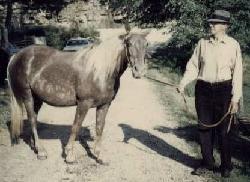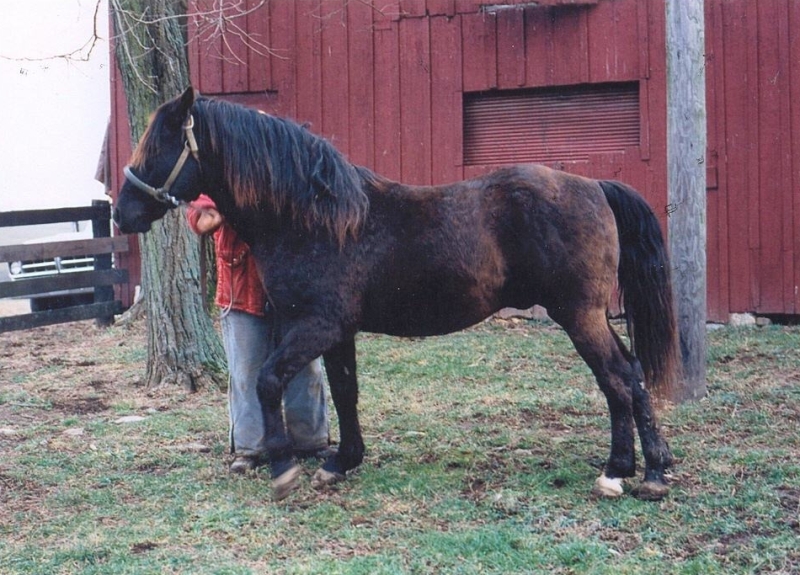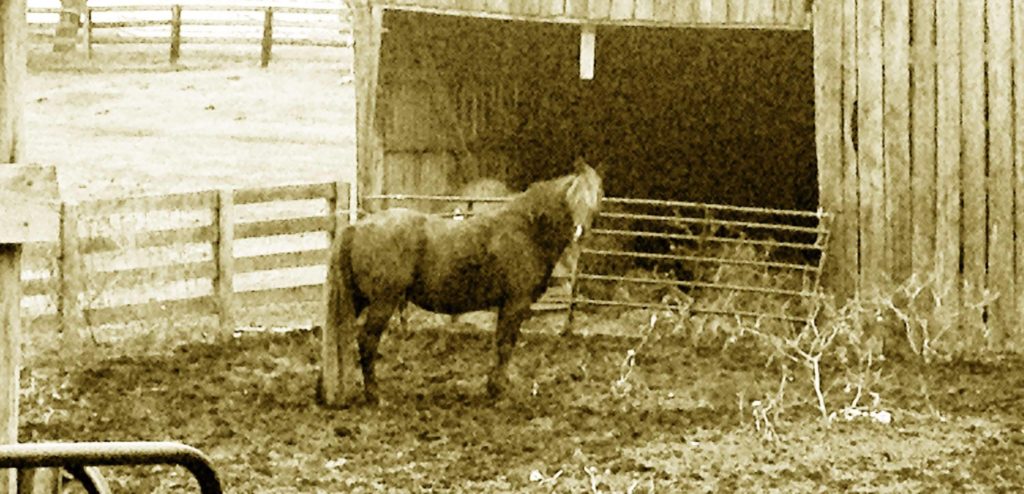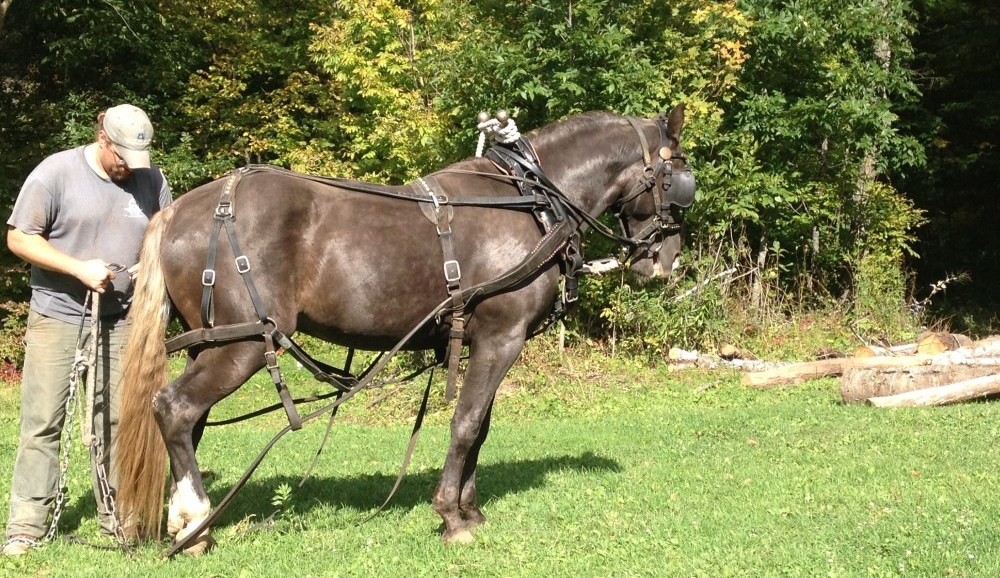Fortunately, spring arrived, and with it the breeding season. My own mares are still pregnant, due at the end of the month, maybe a little earlier. The end of May brought several mares to the farm for breeding, including one really top notch Rocky mare. I love seeing a horse that looks like it should. A true Rocky Mare. And not because of the color. She was a stout mare with a nice, broad chest and sturdy back. Big neck and strong bone. She looked like she could cover the ground with her gait and have the substance to do it easily. To top it off, she had the best temperament, just a sweetheart of a horse. I can’t wait to see that foal when it hits the ground.
Another mare was brought over by one of my neighbors who lives down in the valley, an Amish gentleman who wants good, quiet riding stock; papers are of no concern. Last year, his son brought over a mare to breed to Sonny, and this spring, she delivered a nice buckskin colt. Over the past week, he has brought her by every few days, sometimes ridden, sometimes hitched to his Belgian team on a forecart. Sonny has grown accustomed to mares visiting his farm in this fashion, and he waits patiently at the teasing wall. We still have not caught her in heat, but I suspect tomorrow we will. I have thought about this some.
How history repeats itself.
How much of horse breeding has been exactly like this? Someone up the hollow had a stallion that someone else admired. So, come spring, they brought one of their good mares over hoping for a healthy foal. Maybe they passed other stallions along the way. In this gentleman’s case, he passes at least two, perhaps three (I wonder if they are still standing that stud on Klang?) before he gets to my farm. Being Amish country, there is certainly no shortage of horseflesh, and good quality stallions live within a short distance of any farm. This is a story common to many good stallions throughout history.
I am currently coming to understand the other side of the story. The story, not often told, of the stallion handler. I am discovering the quiet joy of driving down to the valley, slowing the truck to catch a glimpse of one of Sonny’s foals gaiting alongside it’s dam. What a joy that is. That one right there… look at that colt go! Sonny’s genes could be present in this valley for as long as people live here.





Lovely writing my son. Very lyrical. Love, Mom
Thanks Mom. 🙂
A question about the Amish horses-do they primarily leave their stallions intact? If so, do they breed at will or are they intentionally matched for certain attributes? Are there any health issues particular to the Rocky Mountain breed? Is there a need for your horses to be shod?
Hi Teresa-
You know, I need to talk with my Amish farrier more about their approach to stallions- I think it depends on if they have the inclination and its economical. I can’t say I know of any cross bred stallions in the valley, but there are certainly a lot of cross bred mares that are kept for breeding. There are several types of horses they keep on their farms– carriage horses, heavy draft horses, light draft horses, a few riding horses and ponies. When horse prices are low, they’re buying whatever animals fit the bill. Now, horses are high, so they are breeding and buying breeding stock in a big way. Last year in Iowa, a standardbred stud sold to an Amish group for 190K. So they are certainly willing to spend money to get quality breeding stock. I see most cross breeding going on with the riding horses and light draft animals- the “farm chunks”- as these farms get smaller, and heavies are not needed. For riding stock, Amish are just as varied on their opinion of what makes a good horse as with the English community.
Thanks for the questions on health concerns and being shod. I’ll add that to my list of posts to write about! 🙂